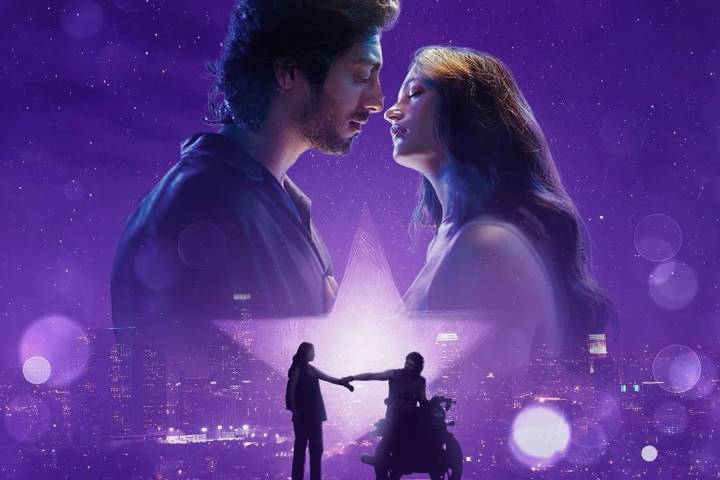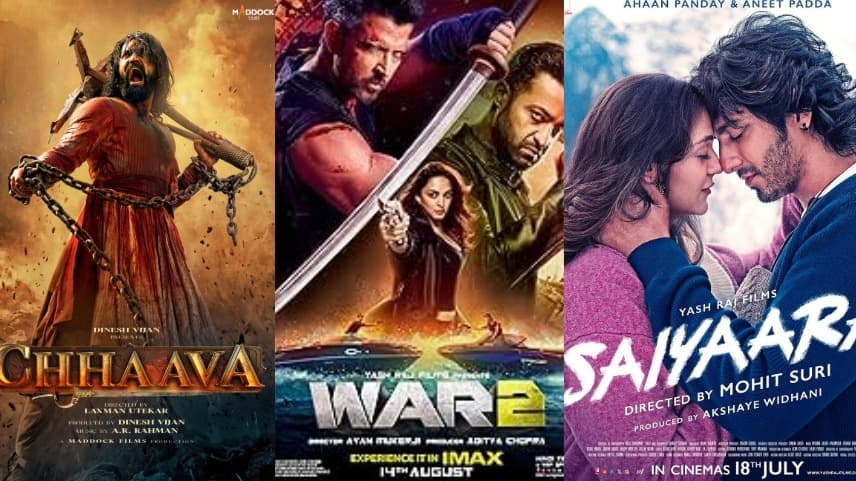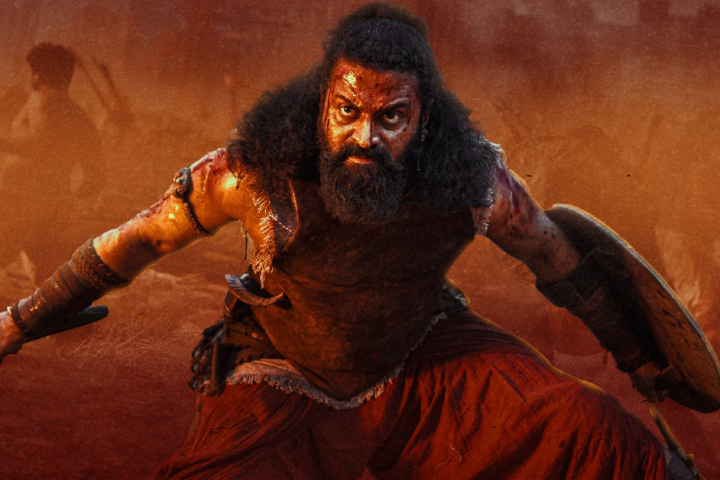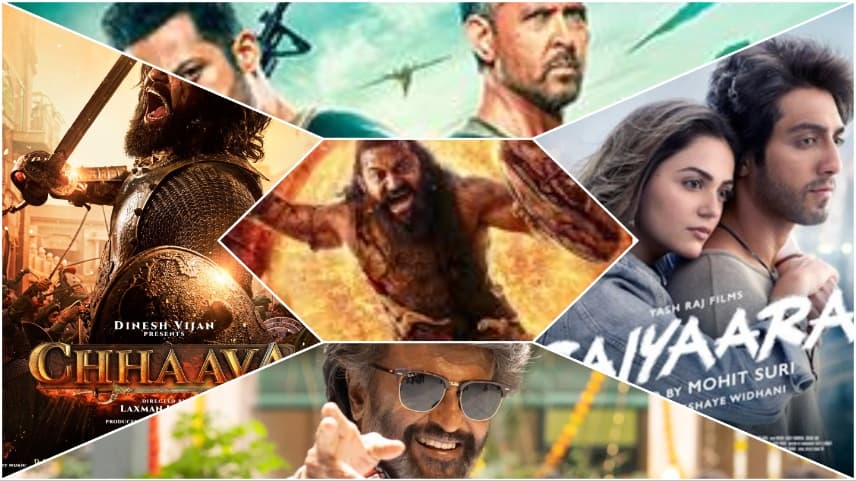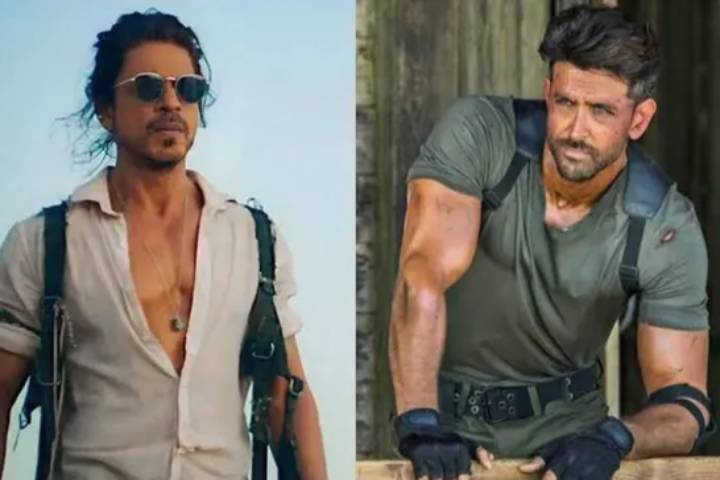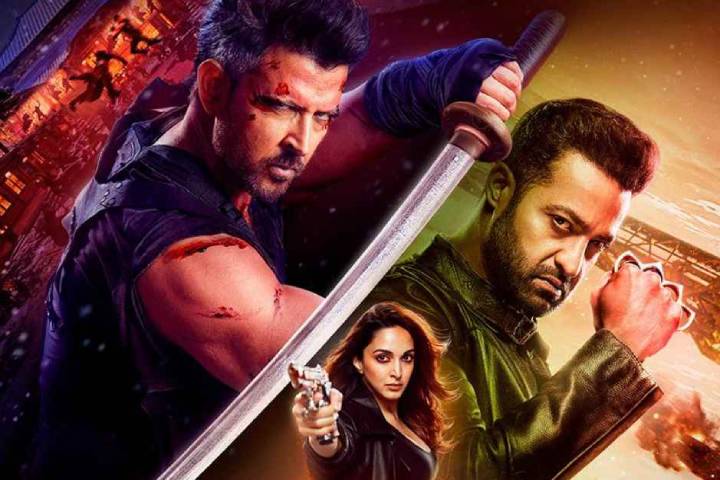 Box Office
Box Office
War 2 Box Office Collection | All Language | Day Wise | Worldwide
Here is the Hindi movie War 2 box office collection which is a spy action thriller film. This film is directed by Ayan Mukerji and produced by Yash Raj Film. ## War 2 stars Hrithik Roshan, NTR Jr., Kiara Advani, Ashutosh Rana, and Anil Kapoor in key roles. ## War 2 Review - Coming Soon!## War 2 Box Office Collection Day Wise | All Language [See Footfalls] DayIndia Net Collection Change(+/-) Day 1 [1st Thursday] ₹ 52 Cr [Hi: 29 Cr ; Ta: 0.25 Cr; Te: 22.75 Cr] - Day 2 [1st Friday] ₹ 57.85 Cr [Hi: 45 Cr ; Ta: 0.35 Cr; Te: 12.5 Cr] 11.25% Day 3 [1st Saturday] ₹ 33.25 Cr [Hi: 26 Cr ; Ta: 0.3 Cr; Te: 6.95 Cr] -42.52% Day 4 [1st Sunday] ₹ 32.65 Cr [Hi: 27 Cr ; Ta: 0.3 Cr; Te: 5.35 Cr] -1.80% Day 5 [1st Monday] ₹ 8.75 Cr [Hi: 7 Cr ; Ta: 0.15 Cr; Te: 1.6 Cr] -73.20% Day 6 [1st Tuesday] ₹ 9 Cr [Hi: 7.75 Cr ; Ta: 0.1 Cr; Te: 1.15 Cr] 2.86% Day 7 [1st Wednesday] ₹ 5.75 Cr [Hi: 4.65 Cr ; Ta: 0.1 Cr; Te: 1 Cr] -36.11% Day 8 [2nd Thursday] ₹ 5 Cr [Hi: 4 Cr ; Ta: 0.1 Cr; Te: 0.9 Cr] -13.04% Week 1 Collection ₹ 204.25 Cr [Hi: 150.4 Cr ; Ta: 1.65; Te: 52.2] - Day 9 [2nd Friday] ₹ 4 Cr [Hi: 3.35 Cr ; Ta: 0.05 Cr; Te: 0.6 Cr] -20.00% Day 10 [2nd Saturday] ₹ 6.85 Cr [Hi: 6 Cr ; Ta: 0.1 Cr; Te: 0.75 Cr] 71.25% Day 11 [2nd Sunday] ₹ 7.25 Cr [Hi: 6.25 Cr ; Ta: 0.1 Cr; Te: 0.9 Cr] 5.84% Day 12 [2nd Monday] ₹ 2.15 Cr [Hi: 1.75 Cr ; Ta: 0.05 Cr; Te: 0.35 Cr] -70.34% Day 13 [2nd Tuesday] ₹ 2.75 Cr [Hi: 2.4 Cr ; Ta: 0.05 Cr; Te: 0.3 Cr] 27.91% Day 14 [2nd Wednesday] ₹ 2.5 Cr [Hi: 1.9 Cr ; Ta: 0.07 Cr; Te: 0.53 Cr] -9.09% Day 15 [3rd Thursday] ₹ 1.5 Cr [Hi: 1.2 Cr ; Ta: 0.03 Cr; Te: 0.27 Cr] -40.00% Week 2 Collection ₹ 27 Cr [Hi: 22.85 Cr ; Ta: 0.45; Te: 3.7] -86.78% Day 16 [3rd Friday] ₹ 0.65 Cr [Hi: 0.5 Cr ; Ta: 0.02 Cr; Te: 0.13 Cr] -56.67% Day 17 [3rd Saturday] ₹ 1.15 Cr [Hi: 1 Cr ; Ta: 0.03 Cr; Te: 0.12 Cr] 76.92% Day 18 [3rd Sunday] ₹ 1.45 Cr [Hi: 1.25 Cr ; Ta: 0.03 Cr; Te: 0.17 Cr] 26.09% Day 19 [3rd Monday] ₹ 0.4 Cr [Hi: 0.32 Cr ; Ta: 0.01 Cr; Te: 0.07 Cr] -72.41% Day 20 [3rd Tuesday] ₹ 0.55 Cr [Hi: 0.45 Cr ; Ta: 0.01 Cr; Te: 0.09 Cr] 37.50% Day 21 [3rd Wednesday] ₹ 0.4 Cr [Hi: 0.3 Cr ; Ta: 0.01 Cr; Te: 0.09 Cr] -27.27% Day 22 [4th Thursday] ₹ 0.4 Cr [Hi: 0.3 Cr ; Ta: 0.01 Cr; Te: 0.09 Cr] 0.00% Week 3 Collection ₹ 5 Cr [Hi: 4.12 Cr ; Ta: 0.12; Te: 0.76] -81.48% Day 23 [4th Friday] ₹ 0.07 Cr [Hi: 0.04 Cr ; Te: 0.03 Cr] -82.50% Day 24 [4th Saturday] ₹ 0.07 Cr [Hi: 0.05 Cr ; Te: 0.02 Cr] 0.00% Day 25 [4th Sunday] ₹ 0.08 Cr [Hi: 0.06 Cr ; Te: 0.02 Cr] 14.29% Day 26 [4th Monday] ₹ 0.02 Cr [Hi: 0.01 Cr ; Te: 0.01 Cr] -75.00% Day 27 [4th Tuesday] ₹ 0.02 Cr [Hi: 0.02 Cr ] 0.00% Day 28 [4th Wednesday] ₹ 0.02 Cr [Hi: 0.02 Cr ] 0.00% Day 29 [5th Thursday] ₹ 0.01 Cr [Hi: 0.01 Cr ] -50.00% Week 4 Collection ₹ 0.29 Cr [Hi: 0.21 Cr ; Ta: 0; Te: 0.08] -94.20% Day 30 [5th Friday] ₹ 0 Cr [Hi: 0 Cr ] -100.00% Day 31 [5th Saturday] ₹ 0 Cr [Hi: 0 Cr ] 0.00% Day 32 [5th Sunday] ₹ 0.01 Cr [Hi: 0.01 Cr ] 0.00% Day 33 [5th Monday] ₹ 0 Cr [Hi: 0 Cr ] -100.00% Day 34 [5th Tuesday] ₹ 0 Cr [Hi: 0 Cr ] 0.00% Day 35 [5th Wednesday] ₹ 0 Cr [Hi: 0 Cr ] 0.00% Day 36 [6th Thursday] ₹ 0 Cr [Hi: 0 Cr ] 0.00% Week 5 Collection ₹ 0.01 Cr [Hi: 0.01 Cr ; Ta: 0; Te: 0] -96.55% Total ₹ 236.55 Cr [Hi: 177.59 Cr ; Ta: 2.22 Cr; Te: 56.74 Cr] - ## Take Subscription To See Footfalls ## India Net Collection ₹ 236.55 Cr ## Worldwide Collection ₹ 364.35 Cr ## Overseas Collection ₹ 81.75 Cr ## India Gross Collection ₹ 282.6 Cr ## War 2 Budget: ₹ 400 Cr * Approx ## War 2 Verdict: Coming Soon ## War 2 Screen count ## India: - * expected ## Overseas: - * expected ## Worldwide total: - ## Release Date: 14th August 2025 ## For more and the latest news about Bollywood Box Office Collection, Stay tuned to us.War 2 State Wise Gross CollectionDayKarnatakaAPTGTamil NaduKeralaRest Of IndiaDay TotalDay 1 [1st Thursday]₹ 4 Cr₹ 27 Cr₹ 1.1 Cr₹ 0.5 Cr₹ 30 Cr₹ 62.6 CrDay 2 [1st Friday]₹ 4.6 Cr₹ 14.5 Cr₹ 1.25 Cr₹ 0.45 Cr₹ 48 Cr₹ 68.8 CrDay 3 [1st Saturday]₹ 3.1 Cr₹ 8.25 Cr₹ 1.1 Cr₹ 0.25 Cr₹ 26.8 Cr₹ 39.5 CrDay 4 [1st Sunday]₹ 2.75 Cr₹ 7 Cr₹ 1.02 Cr₹ 0.33 Cr₹ 27.75 Cr₹ 38.85 CrDay 5 [1st Monday]₹ 0.75 Cr₹ 1.75 Cr₹ 0.4 Cr₹ 0.15 Cr₹ 7.5 Cr₹ 10.55 CrDay 6 [1st Tuesday]₹ 0.75 Cr₹ 1.5 Cr₹ 0.22 Cr₹ 0.13 Cr₹ 8.2 Cr₹ 10.8 CrDay 7 [1st Wednesday]₹ 0.45 Cr₹ 1.3 Cr₹ 0.25 Cr₹ 0.05 Cr₹ 4.85 Cr₹ 6.9 CrDay 8 [2nd Thursday]₹ 0.4 Cr₹ 1.1 Cr₹ 0.22 Cr₹ 0.03 Cr₹ 4.1 Cr₹ 5.85 CrWeek 1 Gross₹ 16.8 Cr₹ 62.4 Cr₹ 5.56 Cr₹ 1.89 Cr₹ 157.2 Cr₹ 243.85 CrTotal₹ 16.8 Cr₹ 62.4 Cr₹ 5.56 Cr₹ 1.89 Cr₹ 157.2 Cr₹ 243.85 Cr ##


